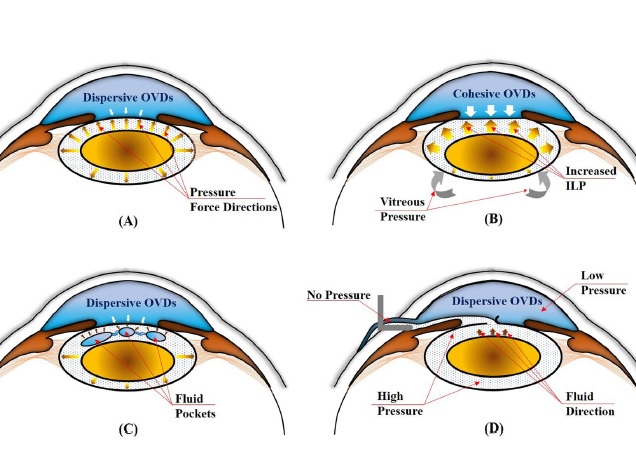Modified capsulorhexis for fluid-filled mature cataracts
Medical hypothesis discovery and innovation in ophthalmology,
Vol. 10 No. 2 (2021),
5 August 2021
,
Page 59-66
https://doi.org/10.51329/mehdioptometry1422
Abstract
Background: The aim of this study was to develop a modified capsulorhexis technique featuring a new maneuver for the removal of subcortical fluid in fluid-filled mature cataracts to avoid high intralenticular pressure.Methods: This prospective interventional study included 33 eyes with mature cataracts and evidence of subcapsular fluid spaces by slit lamp examination. For each patient, 20% mannitol was administered intravenously according to the bodyweight 1 h preoperatively. Under peribulbar anesthesia, a 2.2-mm main incision was made, and the anterior chamber was filled with a dispersive ophthalmic viscosurgical device. Using a bent-tip cystotome, a 2-mm curved incision was made in the center of the anterior capsule, which released subcortical fluid and was drained through compression of the posterior lip of the main incision using a spatula. Then, fine gentle milking in all quadrants around the puncture on the anterior lens capsule from the periphery toward the site of puncture using the blunt-edged spatula further assists drainage of subcortical fluid and breaks fine septa inside the lens to remove fluid from intralenticular fluid pocket collections.
Results: The study included 15 (45.5%) men and 18 (54.5%) women with a mean ± standard deviation (SD) of age of 63.2 ± 5.33 and 64.4 ± 6.21 years, respectively. The modified capsulorhexis technique was performed for 33 intumescent cataracts. Capsulorhexis was completed in all cases; capsulorhexis was easy in 31 (94%) eyes and difficult in 2 (6%) eyes. In the two difficult cases, radial extension occurred in one eye, and it was retrieved using the Little technique; the other case with radial tear was completed successfully using a retinal micro scissor from the other edge of the capsulorhexis until reaching an oval, continuous capsulorhexis.
Conclusions: This modified capsulorhexis technique with compression on the posterior lip of the main incision and capsule milking allowed for a safe, continuous curvilinear capsulorhexis. Further comparative studies are necessary to confirm our preliminary results.

- Abstract Viewed: 296 times
- Full Text PDF Downloaded: 249 times


